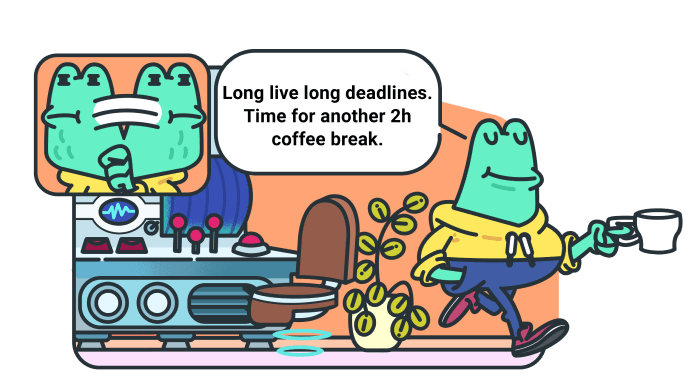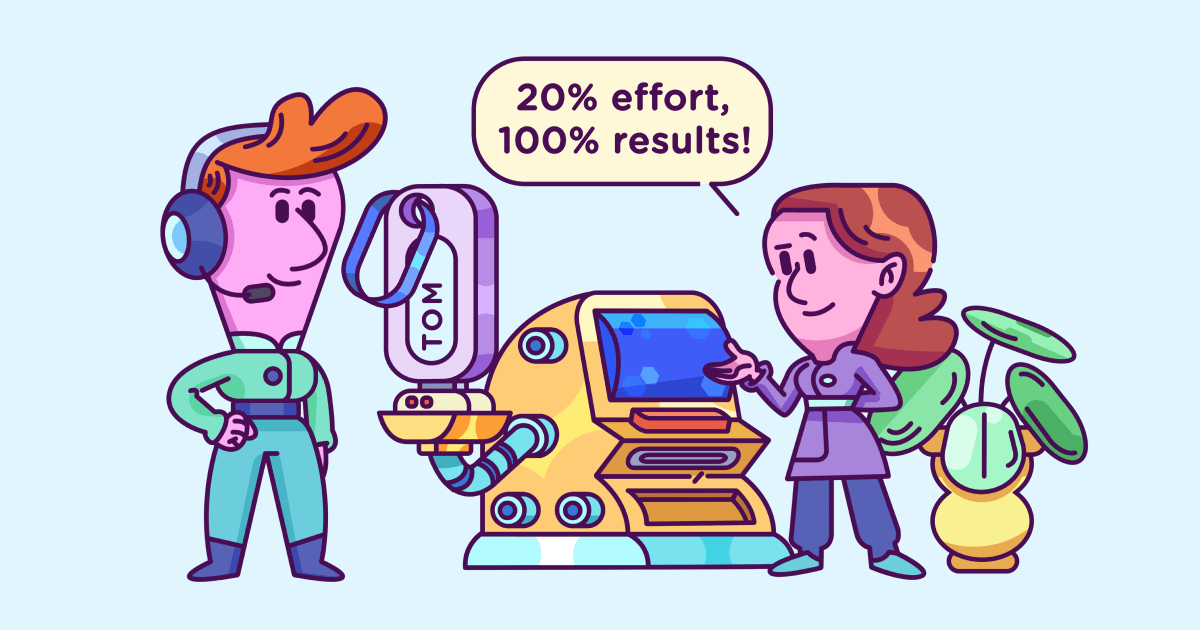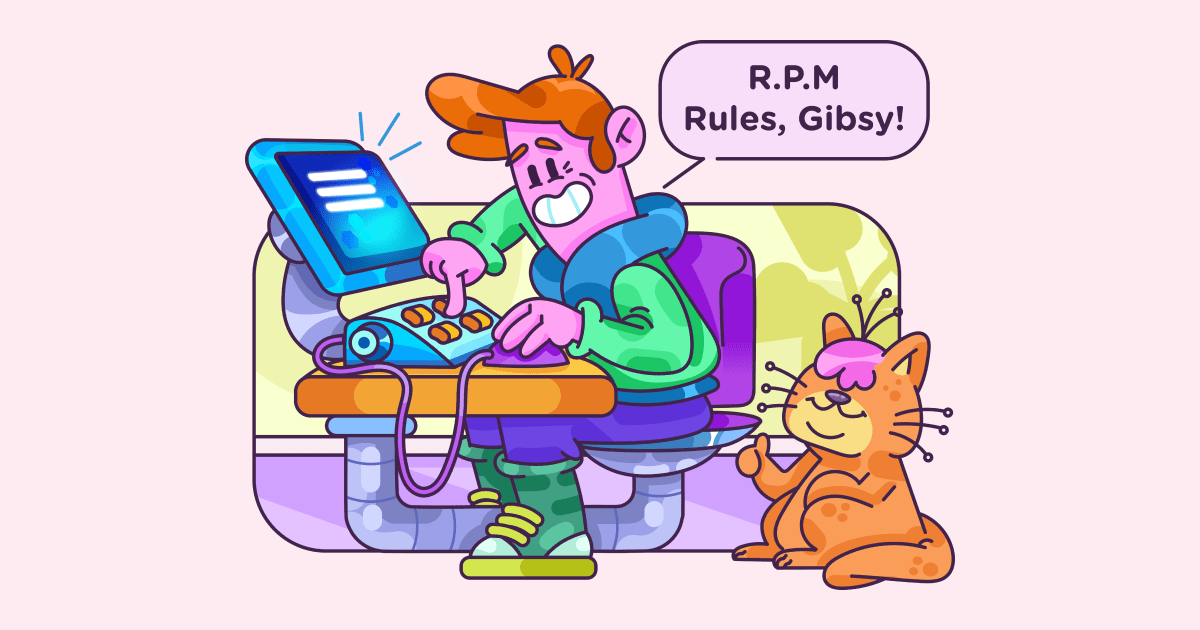Parkinson’s law: why you waste time and how to avoid it
Last updated on: June 22, 2022
Have you ever heard of the word spuddle? It’s the verb from the 17th century that means to work ineffectively, to be extremely busy whilst achieving absolutely nothing.
If you’ve been spuddling these days, you may be a victim of Parkinson’s law. Don’t worry if that’s the case, we have a solution for you.
In this article, we’ll talk about what Parkinson’s law is, why it makes you waste time, and how to avoid it.

Table of Contents
What is Parkinson’s law?
Parkinson’s law is an observation that states that “Work expands to fill the period of time available for its completion.” In other words, people adjust their pace to the workload and the amount of time they have to finish it.
This law is named after Cyril Northcote Parkinson, the famous British historian and author. He wrote the definition above as an opening line to his article for The Economist in 1955. He later wrote a book about the concept, named Parkinson’s Law: The Pursuit of Progress.
In the article, Parkinson intended to take aim at the inefficiency of the bureaucratization of the British Civil Service, where he worked. He noticed that everyone was busy all day long, but very few things were actually accomplished.
Parkinson’s law has since been proven with several studies.
There’s also the Parkinson’s Law of Triviality, which states that people within organizations often give undue time and attention to trivial matters. As Parkinson said, “The time spent on any item of the agenda will be in inverse proportion to the sum [of money] involved.”
Parkinson’s law in project management
Simply put, if you have 2 weeks to complete a task, it will take you 2 weeks to get it done; if you give yourself 5 days for the same task, you’ll manage to finish it in 5 days. Inadequate deadlines often cause procrastination and spending too much time on trivial matters.
Time estimated to complete a task can be exaggerated because of:
- Too big of a buffer, because, as Murphy’s law states, “If something can go wrong, it will go wrong”,
- An inaccurate idea of how much time it takes to complete the task.
We often wonder, “How much time do I have to complete the task?”, instead of “How much time do I need to complete the task?” That comes as no surprise: in the workplace, there are rarely incentives to finish early, since you are “rewarded” only with even more work. As that additional work seldom results in higher pay, many employees don’t find finishing a task early worth the effort.
However, in instances when we care about doing something fast, but also, as efficient as possible, what we should be asking ourselves is: “How much time should I realistically take, without compromising the performance?”
What is an example of Parkinson’s law?
In his work, Parkinson gave an example of an old lady who spends the whole day writing a postcard to her niece. He wrote: “An hour will be spent in finding the postcard, another in hunting for spectacles, half-an-hour in a search for the address, an hour and a quarter in composition, and twenty minutes in deciding whether or not to take an umbrella when going to the pillar-box in the next street.” In short, it took her the whole day to do a simple activity that a busy person would finish in a couple of minutes.
Another common example is a student who procrastinates and then crams everything in 2 days and 2 nights before the exam.
There’s even a phenomenon called the Student Syndrome, where people delay doing the task until right before the deadline. It’s believed that the term was introduced by Eliyahu M. Goldratt in his novel “Critical Chain”; he drew a parallel between students who wait until the last minute to study and employees who do the same with their project tasks because they think they have enough time to do everything.
As the Stock-Stanford Corollary to Parkinson’s law states, “If you wait until last minute, it only takes a minute to do.”
What are some examples of Parkinson’s law in the workplace?
Apart from the above-mentioned Student Syndrome, there are a lot of examples of Parkinson’s law in the workplace.
One of them is when a software company 37signals (now Basecamp) introduced Summer Hours: they work 4 days a week, 8 hours a day during the summer. They started experimenting with it in 2007 and they still do it 14 years later, so it must work. But how?
Their co-founder, Jason Fried, shared his opinion for the New York Times — in short, taking more time off makes you more productive.
He also explained:
“Very few people work even 8 hours a week. You’re lucky if you get a few good hours in between all the meetings, interruptions, web surfing, office politics, and personal business that permeate the typical workday.
Fewer official working hours help squeeze the fat out of the typical workweek. (…) They [employees] don’t waste it on things that just don’t matter. When you have fewer hours you usually spend them more wisely”.
Meetings can also be a good example of Parkinson’s law.
Sometimes, people ramble, exceeding the time allotted, with no structure or agenda in sight.
In the end, you leave without a clear idea of what’s been said in the last 2 hours.
Jack Welch, the former CEO of General Electric, said in his interview with Harvard Business Review:
“Frightened, nervous managers use thick, convoluted planning books and busy slides filled with everything they’ve known since childhood. Real leaders don’t need clutter. People must have the self-confidence to be clear, precise, to be sure that every person in their organization — highest to lowest — understands what the business is trying to achieve.”
But, he concludes that simplicity is the hardest to achieve. People often think that using big and complicated words will make them appear smarter. Instead, it just wastes time — communication in the workplace should always be clear and concise.
How do you overcome Parkinson’s law?
There are a few ways to overcome Parkinson’s law and boost your productivity.
Determine project’s value and importance
If you want someone to be efficient (yourself included), they need to be aware of the project’s value and importance. It’s hard to be motivated to finish a project with no particular significance.
So, always paint a bigger picture. Explain not only how the current task helps with reaching a bigger goal, but also what will come next. Sometimes, people procrastinate because they don’t know what to do after they finish what they’re working on at the moment. Because of that, there should be a schedule and a plan for the project.
Set deadlines
Apart from a project deadline, set a few additional deadlines for each milestone.
For example, I have self-imposed deadlines for all the phases of writing my articles. That way, I can make sure I finish everything on time without any stress. I set due dates for completing the first draft, the second draft, and finally, editing.
Work in time slots
To stay focused throughout the day, work in time slots. They can be as short as 25 minutes (as in the Pomodoro technique) or as long as 90 minutes. I wouldn’t advise working longer than that, as studies suggest that the brain can only focus for 90 minutes before needing a 15-minute break.
Making breaks will help your mind stay fresh, focused, and efficient.
Track your time
To figure out how much time each project actually takes, track your time. There are plenty of easy-to-use time tracking apps that will let you see how you spend your time — what percentage of it is spent working? And how much time goes to procrastinating or doing trivial things?
It’s a good idea to do a Weekly Review of your work: at the end of every week, check how you spent your time in the previous 5 days. Is there an area you should improve on? Is there something you should spend more or less time on? Weekly Reviews are something that really made a difference in my productivity.
💡 Check out expert tips on How to take back control of your time.
Try timeboxing or time mapping
Allocating fixed units of time for activities in advance is called timeboxing. It’s a time management technique that serves to allocate time periods and put a strict limit to activities that would otherwise take away too much of your time.
A similar technique, called time mapping, goes a step further: when you dedicate each unit of time to an activity, it gives you an overview of your time. It also includes deciding on your top priorities in all areas of your life.
Precisely define what means the task is done
Set clear expectations of what it means to complete the task successfully. This is helpful both for perfectionists, who always have something to improve or add, and for beginners, who may feel insecure in their skills.
Furthermore, precisely determine everyone’s roles and responsibilities in a project, to avoid wasted time due to misunderstandings.
Have your goal somewhere visible
When we don’t have our goals in mind (and in sight), we tend to get caught up in insignificant tasks. To avoid that, write important things you need to accomplish in a visible spot (such as a post-it note on your computer), so you can remind yourself of what you have to focus on.
Make your goals transparent
Tell people around you about your goals. Other people will keep you accountable — when you tell everyone about the things you want to achieve, you will subconsciously feel obligated to accomplish them as soon as possible. As a consequence, you’ll procrastinate less and waste less time on trivial matters.
Challenge yourself
Try finishing a task 10% faster, without compromising the quality. If you do well, next time try completing it 15% faster, then 20%, and so on. For example, if it usually takes you an hour to finish a task, try finishing it 5 minutes earlier, then 10 minutes earlier. After that, try completing the task in 45 minutes and keep gradually shortening the time — until you find that ideal sweet spot where you don’t spend too much time on a task, but still finish it with flying colors.
Conclusion
Parkinson’s law is an unwanted, but frequent visitor in every workplace. When you start being aware of it, you are on a good track to become more efficient. Luckily, you can avoid it in many ways, from setting additional deadlines to tracking and analyzing your time.
✉️ What’s your favorite way of overcoming Parkinson’s law? What is your personal experience with Parkinson’s law? Write to us at blogfeedback@clockify.me for a chance to be featured in this or future articles.





